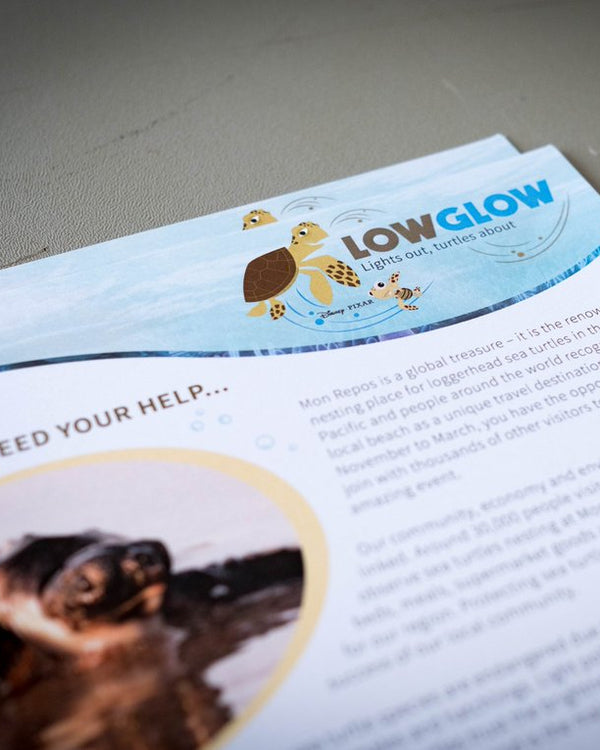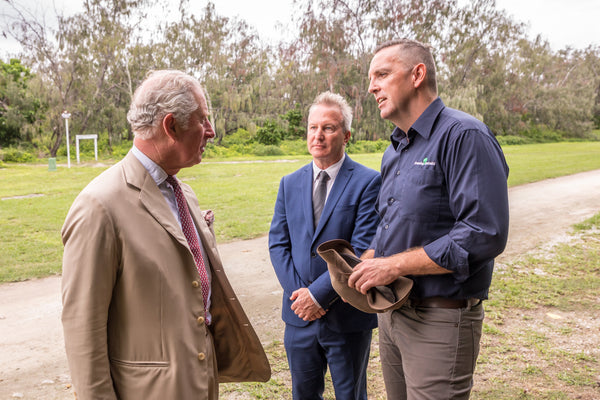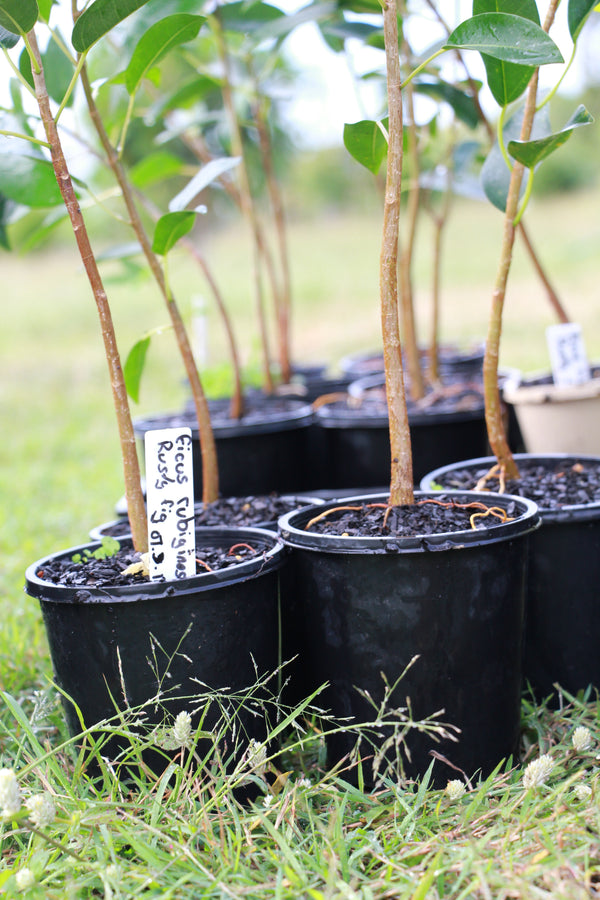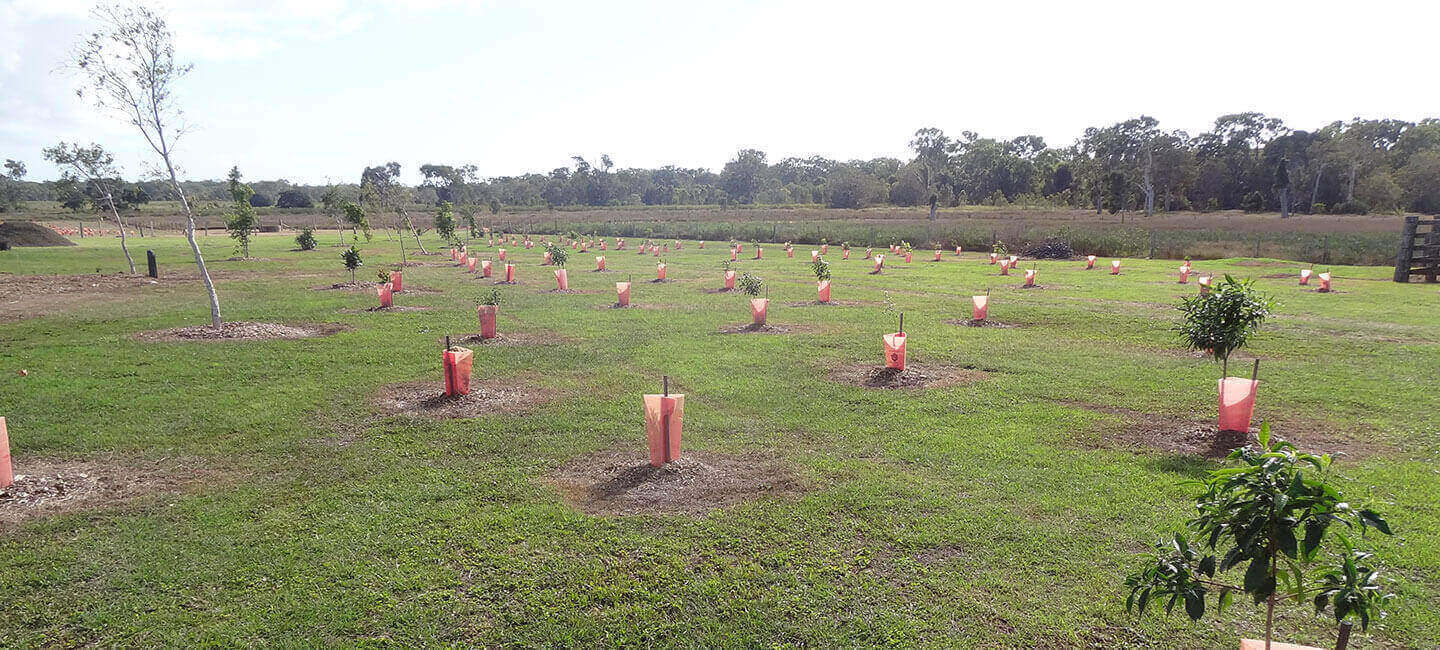Planting Trees To Protect Endangered Sea Turtles
Did you know that artificial light glow from our homes and streets confuses newly hatched turtles, making it hard for them to safely find their way to the ocean?
It’s a real threat, but the Know Your Glow project (formally known as Low Glow) is proving that sea turtles and humans can live side-by-side with some simple actions

The Low Glow Story
In 2016, Greenfleet joined forces with The Prince’s Trust Australia and The Walt Disney Company (Australia) to protect our sea turtles and create a local community activation program. The Low Glow project (as it was known as in the beginning) aims to protect Queensland’s endangered sea turtle population and engage the local community to reduce artificial light glow around important turtle nesting sites.
Since 2017, Greenfleet has planted over 85,000 native trees in Barolin Nature Reserve in Bundaberg, Queensland. This is the largest ever reforestation project in the region, with the forest expected to absorb more than 50,000 tonnes of carbon.
The growing forest has been designed to protect the local sea turtle population at neighbouring Mon Repos beach. As the trees grow, they will form a 'green curtain' to shield the sea turtle hatchery from artificial light pollution.
Together with our project partners, Greenfleet worked with the local community on an innovative pilot program to audit household lighting and encourage Bundaberg residents to dim their house lights during the turtle hatching season.
In 2018, Greenfleet was delighted to welcome His Royal Highness, The Prince of Wales, to Bundaberg to discuss the Low Glow project and its contribution to Great Barrier Reef conservation efforts. The project collaboration also formally expanded to include the Bundaberg Regional Council, the Sea Turtle Alliance and Bundaberg North Burnett Tourism.

In 2018, Greenfleet was delighted to welcome His Royal Highness, The Prince of Wales, to Bundaberg to discuss the Low Glow project and its contribution to Great Barrier Reef conservation efforts. The project collaboration also formally expanded to include the Bundaberg Regional Council, the Sea Turtle Alliance and Bundaberg North Burnett Tourism.
Since 2019, Bundaberg Regional Council have been managing the project. After recieving a Smart Cities Grant, they can implement a digital 'light map' (based on the heat map concept) allowing residents and tourists to assess the artificial light glow from their own homes at night.
This tool will allow users to assess the immediate impact of (often unconscious) habits when it comes to artificial light use at night. It is anticipated that there will be immediate benefits to local sea turtle hatchlings, since reduced light glow will enable them to find their way to the ocean faster.
In March 2020, works are beginning along the Bagara esplanade, installing smart pathway lighting. Local residents as well as visitors to the region can find out more on the Bundaberg Regional Council's Reducing Urban Glow page.

Why It Matters
Mon Repos beach is home to the largest concentration of nesting sea turtles on Australia’s east coast and records the most significant Loggerhead turtle nesting population in the South Pacific. Loggerhead turtles are listed as endangered in Australia and the success of the hatchery at Mon Repos is critical for the survival of the species.
Artificial lighting is a major threat to turtle populations world-wide. Once hatched, turtle hatchlings must find their way out to sea and follow the lowest brightest horizon they can see. Hatchlings often become disoriented by the bright lights of nearby towns and are lured inland, away from the safety of the sea.
Protecting the sea turtles is key to the success of the local community. The Bundaberg community, environment and economy are closely linked. Around 30,000 people visit Bundaberg each year to observe the sea turtles nesting, providing significant tourism and economic benefits to the region. Through the project, we are also developing a better understanding of the ways we use lighting in urban areas, including at home and outdoors. Technology is providing new options such as low spectrum lighting, improved shielding of streetlights, sensors and remote lighting management.
How You Can Help
You can help our turtle hatchlings head safely out to sea today.
Donate to Greenfleet to support our work in Bundaberg and other community conservation projects.
If you live or work near a beach with a nesting sea turtle population, we’d love you to 'Know your Glow'! Think about whether your home or business lighting is managing artificial lighting at nighttime and make sure you turn off any unnecessary external lights from October to April. Download our guide to undertaking a light audit of your household or visit the Bundaberg Regional Council website on how to reduce your glow.
Resources
- Article by Dr Blair Witherington: The Illuminating Way One Small Australian City Is Saving Sea Turtles
- Article by Greenfleet CEO, Wayne Wescott: How Dimming Lights To Save Turtles Can Teach Us To Live And Build Sustainably
- Photos of the Low Glow initiative
- Photos of Greenfleet's revegetation in the Barolin Nature Reserve near Mon Repos
- Low Glow video


